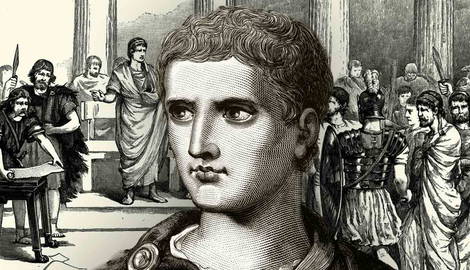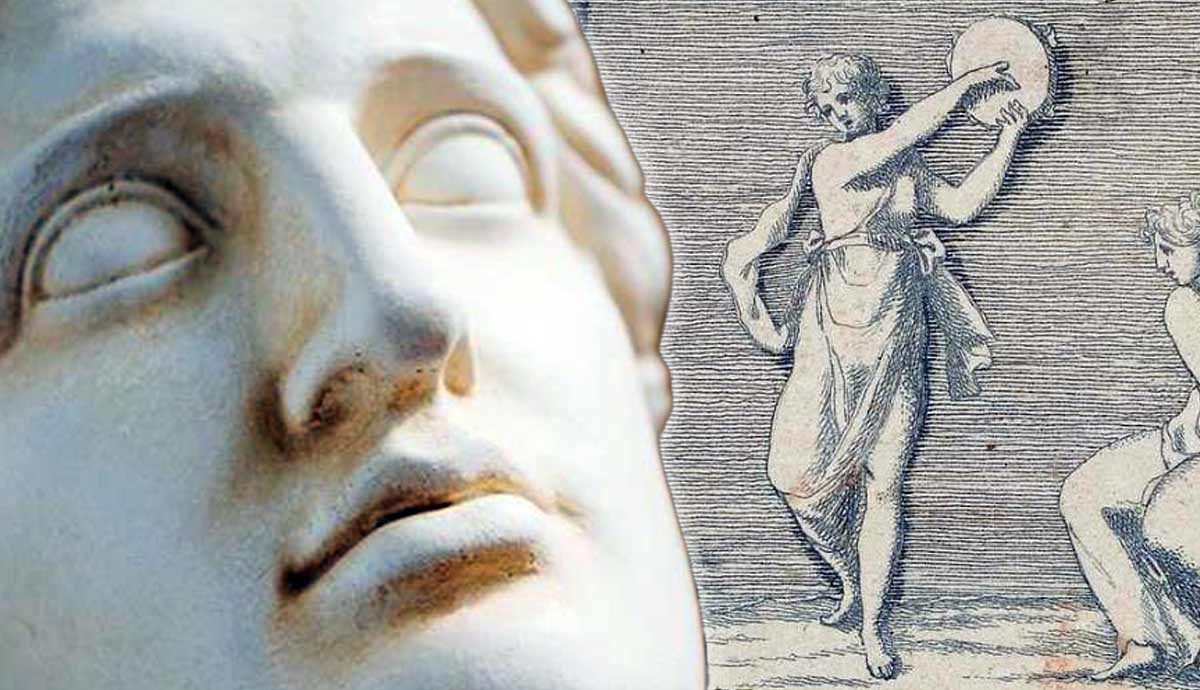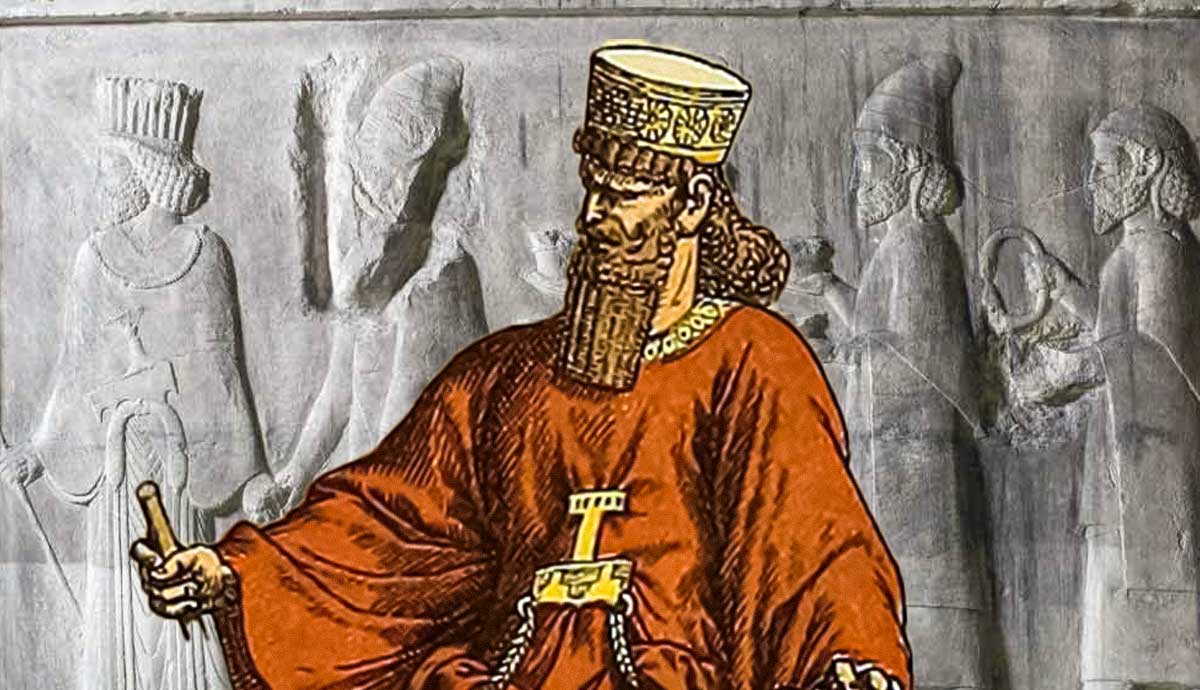
Rome’s shift from an oligarchic Republic to an authoritative Empire was a bloody one fueled in part by the traditional Roman hatred of the idea of kingship. Julius Caesar lived for less than two months after he was named “dictator for life,” but after his successor Octavian was named Augustus and absolute ruler in 27 BCE, he managed to remain the sole ruler of the Roman Empire for more than 40 years. What strategies did Augustus employ that enabled him to be accepted as the absolute ruler of the Roman world by a society that still promoted Republican values? This article explores some of his most important strategies.
Divine Ancestry of the Gens Julia

Octavian, later Augustus, was the great-nephew of Julius Caesar, who adopted his nephew as his heir in his will. When Caesar was killed in 44 BCE, Octavian held funeral games in his honor. It was at these games that the crowds spotted a bright comet in the sky and believed that this was the soul of Caesar joining the gods in heaven through a process known as “apotheosis.” Octavian took advantage of this situation to enhance his own reputation. By urging the Senate to proclaim Caesar as a god, he became the son of a god, bolstering his power and reputation.
Caesar used similar tactics when he was alive, claiming he was a descendant of the goddess Venus. Augustus took this further. When he designed the Forum of Augustus, he included a temple of Venus Genetrix (progenitor/mother), paying homage to his ancestors. He then implied that he had been chosen by the gods to bring peace and prosperity to Rome and therefore held his position by “divine right.”
Augustus also learned from the mistakes of Caesar. Julius Caesar’s leadership was marked by ambition, force, and direct action, which produced swift results but often came with dangerous risks. To avoid a fate similar to Caesar’s, Augustus knew he had to be more strategic in his reign. He had to convince the public he was not a dictator while harboring dictatorial powers, as well as reinstate peace within Rome after an era marked by civil wars and chaos. Whereas Caesar promised the people a new political institution, Augustus knew what they really wanted was to return to the idealized peace of the Republic before the decades of civil war. He spent his entire reign convincing the public that this had been achieved.
Extraordinary Powers: From Triumvir to Princeps

The Senate was the heart of the Roman government. It was reportedly created by Romulus when the city was founded in 753 BCE. The Senate gathered the patriarchs of the leading families, and its power grew when the kings were ousted in 509 BCE. It was from the Senate that Rome’s consuls, governors, generals, and other important leaders were chosen.
In the 1st century BCE, the power of the Senate began to break down as it was dominated by political strongmen with access to personal armies such as Sulla, Pompey, and Caesar. In 43 BCE, following Caesar’s death, special powers were granted to a Triumvirate—Mark Antony, Octavian, and Lepidus—granting them exceptional powers with the responsibility of restoring the Republic. In reality, the arrangement just gave validation to an agreement worked out by the strongmen themselves.
Octavian eventually emerged as the last triumvir standing. Lepidus surrendered to Octavian and agreed to exile after his troops deserted him. Octavian convinced the Senate to declare Antony a public enemy, accusing him of turning his back on Republican values to make himself an Eastern king. Antony and Cleopatra were eventually defeated at the naval Battle of Actium in 31 BCE. These two wins allowed Octavian to become Princeps Senatus (first senator) and adopted the title Augustus (sacred) in 27 BCE.
Senatorial Reform: Controlling the Elite

Initially, Augustus ostensibly gave up many of his powers to feign humility. But the Roman people, including the Senate, feared Rome would collapse without the clever Augustus to lead them. So, Augustus agreed to retain certain powers, but only for a ten-year period. During that time, he reduced the number of senators from 1,000 to 600. He also made it more difficult for someone to become a senator by creating rules around property, wealth, and no criminal record. Doing so allowed him to consolidate his power, as well as weed out potential enemies within the Senate.
However, rather than relinquishing his powers, in 19 BCE, his rights were expanded to include tribunicia potentas (tribunician power), usually associated with the tribunes that represented the greater Roman populace. These powers included the ability to propose laws whenever he wanted, veto laws and actions, and grant amnesty to any citizen accused of a crime. He was also granted a form of greater provincial power that allowed him to override orders from other provincial governors in the empire. By accepting these powers, he was able to pose himself as the protector of the Roman people, while still maintaining the façade of a Republican government.
The Praetorian Guard: Military Force

Formed during the Roman Republic, the Praetorian Guard was originally a unit of soldiers who acted as bodyguards for high-ranking political officials in Rome, such as senators and generals. The guard would employ hundreds, or even thousands, of experienced soldiers to accompany them on battlefields and in cities alike. One of the first historical records of the Praetorian Guard was in 275 BCE for the Scipio family, a prominent Roman family whose descendants went on to become infamous Roman generals.
The Praetorian Guard operated as such until 27 BCE when Augustus turned them into his own personal security escort system. He formed nine cohorts of 500 men each and only included Italians so that no conquered peoples could assassinate the emperor. Three of the cohorts were stationed within the capital to patrol the emperor’s palace and other major buildings, while the others were stationed throughout Italy. They would also accompany the emperor on military campaigns.
The Praetorian Guard were influential power brokers because of their proximity to the emperor and their monopoly on carrying arms in his presence, including inside the pomerium (sacred city boundaries) where weapons were typically prohibited. Although their main function was to protect the emperor and his family, they also acted as a police force, enforcing the law and maintaining order. In fact, many guards stationed in Rome would dress in white togas instead of armor to blend in and act as secret police, being the eyes, ears, and, sometimes, fist of the emperor. This instilled fear in both commoners and aristocrats alike.
Propaganda: Idealistic Art

Visual works and images were a highly effective form of propaganda even before the time of Augustus. This is mainly due to the fact that while literacy rates were low in ancient Rome, imagery could reach the masses. Augustus utilized this to his advantage throughout his life to convey a slew of messages. One of the more obvious patterns was how he was always shown as a strong youthful man. Even in his old age, he continued to commission art pieces that depicted him as a man in his 20s because, in Ancient Rome, youthfulness was equated with strength and competency.
A rather large number of Augustan artworks also depict him among gods and goddesses, reinforcing the claim that he was chosen by the gods to rule over Rome and restore the Republic. A famed example of this is the Augustus of Prima Porta, a statue depicting a young Augustus in a military uniform standing next to a cupid. His breastplate depicts multiple different gods praising all he has done for Rome. Many artworks often depicted Augustus as a strong military leader, a generous and benevolent ruler, and as the restorer of peace. All of this reinforced the idea that he was the savior of Rome and proved that Rome had flourished under his leadership.

He also continued Julius Caesar’s practice of putting his image on Roman coins so everyone in the Empire could identify him. Before Caesar, Rome and its territories had only ever put gods and goddesses on their coins. By putting his face on coins, Augustus asserted his authority over the Empire. By dictating how he was portrayed on the coins (youthful and strong), he could control how the public perceived him.
Executive Committee: Trusted Inner Circle

As mentioned before, Augustus had the Praetorian Guard to protect him wherever he went and also to enforce his orders and laws. However, he also had an inner circle of relatives and colleagues who were loyal to him and advised and influenced him in his decisions.
His right-hand man was Marcus Agrippa, a Roman general, statesman, and architect. Agrippa was widely known for being the builder of the Pantheon in Rome, but this was not his only achievement. He was a skilled military strategist, particularly in naval warfare, which secured victory at the Battle of Actium in 31 BCE. It was this victory that wiped out Augustus’ political opponents and gave him possession of wealthy Egypt, which he used as Rome’s bread basket. Agrippa was given responsibility for improving Rome’s infrastructure, which is why he designed bridges and aqueducts in addition to his renowned temples. This helped bolster Augustus’ popularity.

One of Augustus’ most shrewd confidants was his third wife, Livia. Livia was cunning in nature and extremely intelligent. He valued her opinion on political and social matters, and she often influenced not only his decisions but also those of the Senate. She was devoted to Rome’s prosperity and focused on initiatives involving agriculture, infrastructure, and expanding trade networks. Livia was also a patron of the arts, particularly literature and architecture. She was also aware of the impact of her own public image. She advocated for traditional Roman values, such as focusing on families, and wanted to curb vices, especially adultery.

Augustus made Agrippa part of his family by marrying him to his daughter Julia, and Agrippa promoted his entire family as the future protectors of Rome. This is most dramatically presented on the Ara Pacis (altar of peace) in processional scenes that show members of Augustus’ family, including women and children, among the official procession alongside magistrates and priests. Augustus looked to his family to act as loyal generals and successors, starting with his nephew Marcellus, followed by his grandsons Gaius and Lucius, and eventually settling on his stepson Tiberius, who succeeded him to power as Rome’s second emperor when Augustus died, probably of natural causes, at the age of 75 in 14 CE.
To say Augustus was a smart man is an understatement. He used his intelligence, influence, and charm to navigate the political waters and reshape Rome to his liking. He made sure he was the one pulling the strings, even if he never claimed to be, and he did everything he could to make Rome prosper under his leadership.









